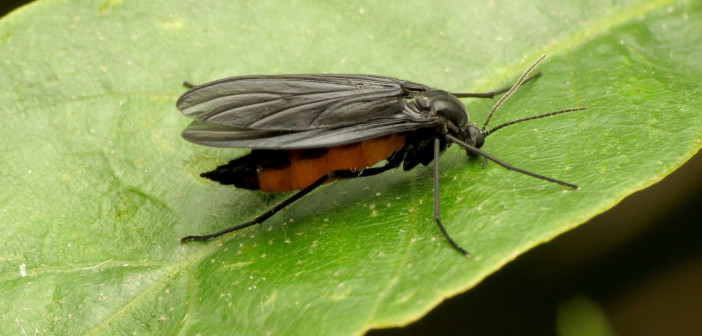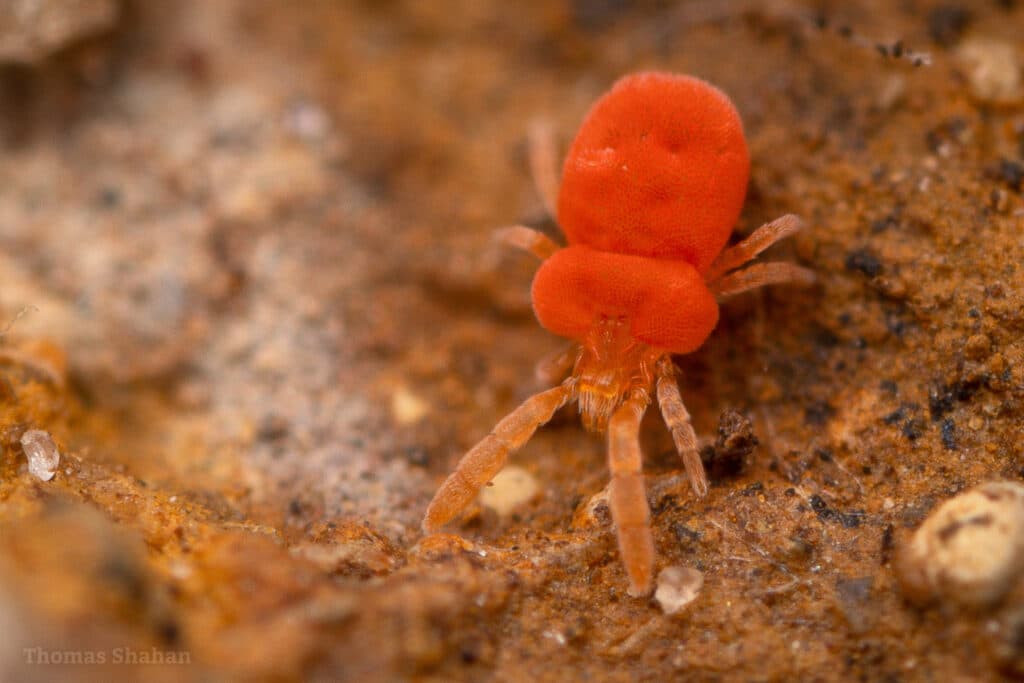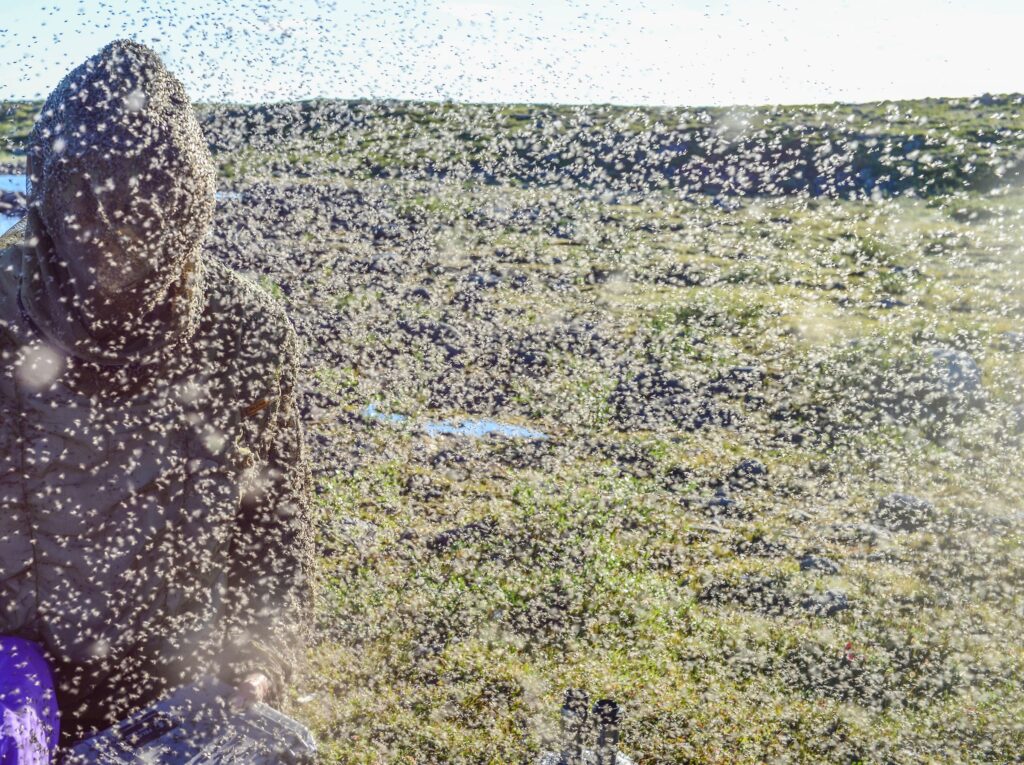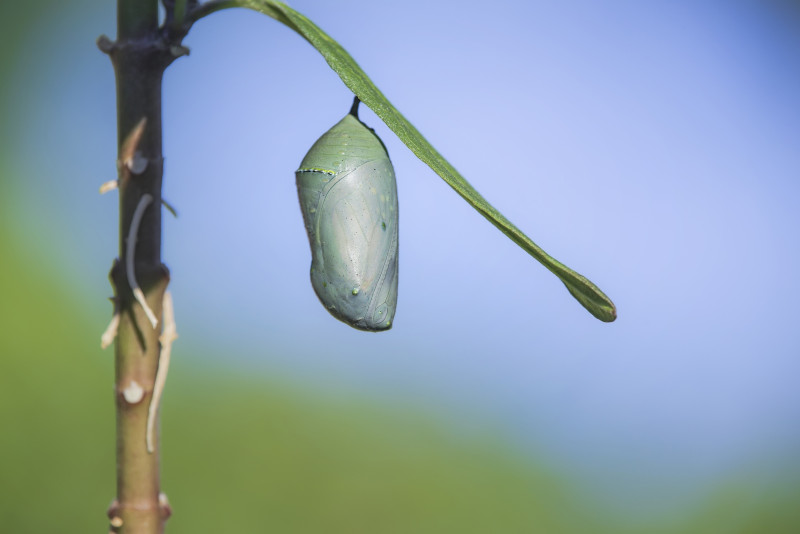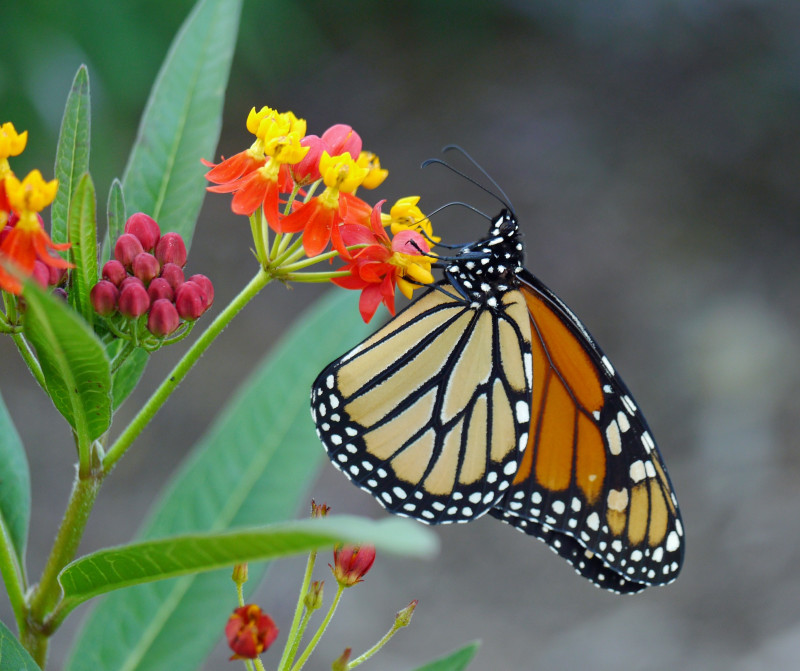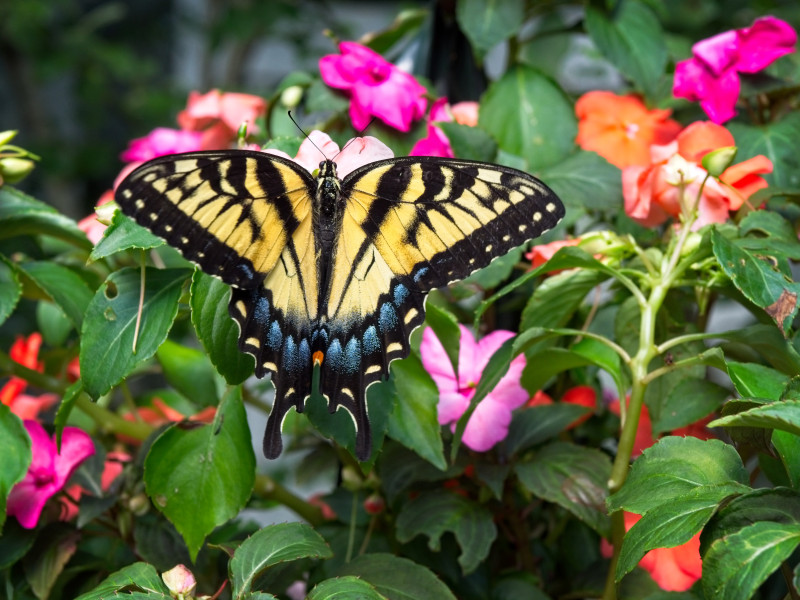When we’re out enjoying our backyard wildlife habitat, we may feel closer to the wonders we’ve created, but it can also expose us to some of its most annoying inhabitants: tiny, biting insects. Among these pests, chiggers, biting gnats, black flies, and other “no-see-ums” are notorious for their ability to cause intense itching and discomfort despite their minuscule size. They’re so small they can barely be seen, but they leave a noticeable impact on those they bite.
Here’s what to know about these annoying animals and how to protect yourself:
Chiggers, Trombiculidae
Chiggers, the larval stage of certain mites from the Trombiculidae family, are nearly microscopic in size, typically less than 0.007 to 0.008 of an inch (0.17–0.2 mm) long. Despite their diminutive stature, they’re widespread and found in various habitats, including grassy fields, forests, gardens, and areas with dense vegetation. They thrive in warm, humid environments, often making their presence felt during late spring, summer, and early fall.
There are over 3,000 species of chiggers, and their behavior is characterized by a unique feeding process; females attach to the skin of their hosts and inject digestive enzymes to break down skin cells, which they then consume. This feeding method results in intensely itchy, red welts that can cause significant discomfort. Chiggers do not burrow into the skin; instead, they remain on the surface, usually targeting areas where clothing is tight against the skin, such as waistbands, under socks, and in skin folds.
Chiggers aren’t insects. They’re mites in the same class, Arachnida, as spiders but belong to a different family. Chiggers and spiders differ significantly in their behavior, habitat, and life cycle.
No-see-ums
Biting gnats and biting midges are flies typically called no-see-ums. “No-see-um” comes from the unfortunate fact that they escape our detection until it’s too late. That’s because they’re incredibly small, typically measuring only 0.0625 to 0.125 of an inch (1.5–3 mm) in length. Some are so tiny they can pass through a standard window screen. Their bites leave itchy, red welts and can be quite painful. In some cases, they lead to allergic reactions or secondary infections from scratching.
These tiny pests are found across a wide geographical range. They thrive in various habitats, including wetlands, forests, and areas near bodies of water, where they breed. Only the females bite because they seek the protein in blood from humans and animals for developing eggs. There are numerous species of biting gnats, encompassing over 5,000 known species.
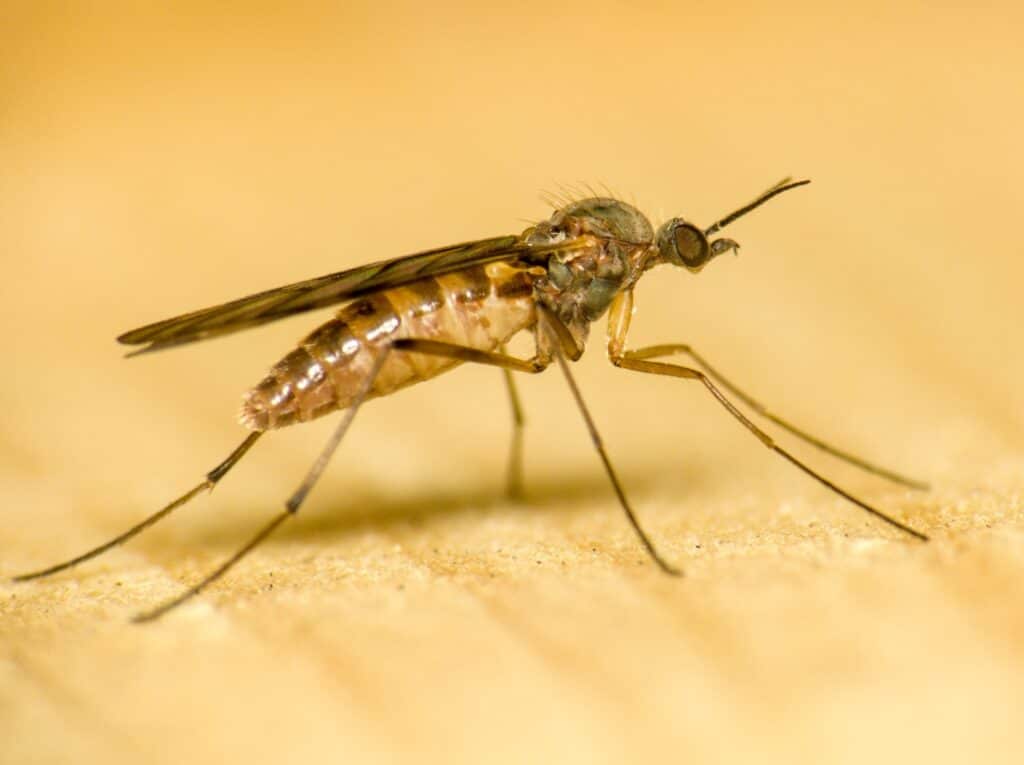
Wood gnat, also called a window gnat, one of eighty species in the genus Sylvicola (Martin Cooper / Wiki; CC BY 2.0)
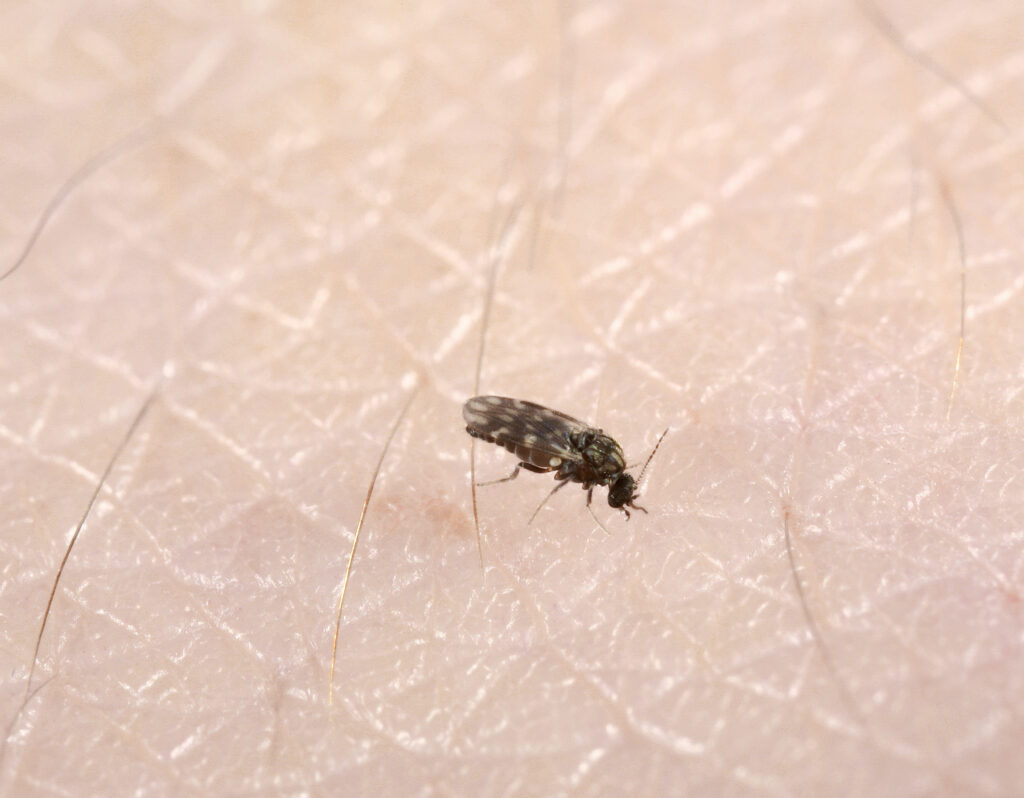
Biting midge, one of about 5,300 species in family Ceratopogonidae, on human skin (CSIRO / Wiki; CC BY 3.0)
Black flies, family Simuliidae
Black flies are also notorious no-see-ums. Typically measuring around 0.04 to 0.2 inches (1.0–5.0 mm) in length, they’re difficult to see and even harder to avoid. These minuscule pests are found globally, with a particular abundance in temperate and tropical regions. They thrive near flowing water, such as rivers and streams, where they breed. Known for their aggressive biting behavior, female black flies seek blood meals from humans and animals, leaving behind painful, itchy welts that can cause significant discomfort and, in some cases, allergic reactions.
Their bites are more than just a nuisance, as black flies are vectors for diseases like river blindness in some parts of the world. There are over 2,000 known species, each adapted to specific environmental conditions but sharing a common proclivity for biting and breeding near aquatic habitats. All about flies
Sand fleas, family Talitridae
Sand fleas are tiny crustaceans, with the smallest typically measuring around 0.04 to 0.08 inches (1.0–2.0 mm) in length, barely visible to the naked eye. These minute creatures are predominantly found in coastal regions worldwide, thriving in sandy beaches, tidal zones, and other moist environments. Despite their name, sand fleas are not insects and are more closely related to shrimp and crabs. Their behavior is characterized by their remarkable jumping ability, which they use to move quickly through their sandy habitats. They feed on organic matter, including decaying plants and animals, and are known for their biting, which can cause itchy, irritating welts on human skin. There are numerous species of sand fleas, each adapted to specific coastal environments, contributing to the biodiversity of these unique habitats. Although tiny, their presence can significantly impact beachgoers, necessitating awareness and preventive measures to avoid their bites.
Fire ants, Solenopsis spp.
Fire ants are particularly notorious for their painful bites and stings. They’re small, 0.08 to 0.2 of an inch (2–6 mm) in length, and reddish-brown. Found in various parts of the world, particularly in the southern U.S., fire ants build large mounds in open, sunny areas like lawns, fields, and pastures. When their nests are disturbed, they become very aggressive, swarming and biting repeatedly. Their bites can cause intense pain, itching, and, in some cases, severe allergic reactions.
Fire ant nests, or mounds, can be flat or dome-shaped. They’re formed of fine and more granular soil and can range from a few inches to over a foot in height and diameter. Flat ones may look like a slightly raised patch of earth. Unlike other ant mounds, these nests often lack a visible entrance hole on the surface, as fire ants tend to enter and exit through underground tunnels. All about ants
How to protect yourself from biting insect pests
Protecting yourself from biting gnats, midges, black flies, sand fleas, fire ants, and chiggers involves a combination of personal protection, environmental management, and prompt response to bites.
- Wear long sleeves, long pants, and closed-toe shoes when venturing into areas known for these pests.
- Use insect repellent containing DEET or picaridin on exposed skin and clothing to reduce the likelihood of bites. That is, except for fire ants when their nest has been disturbed. Their aggressive nature can overcome the effects of preventative chemicals. So, in their case, it’s best to be vigilant and not disturb nests.
- Treat clothing with permethrin to help repel these insects. Stay vigilant and avoid areas with high insect activity which will minimize encounters. This includes standing water, tall grass, and dense vegetation,
- Maintain a well-kept yard to reduce their habitats. Regularly mow and trim bushes.
- To prevent unwanted visitors from entering living spaces, create physical barriers, such as fine mesh screens on windows and doors.
- Use outdoor fans on patios and porches as these tiny insects struggle to navigate strong air currents.
In the event of bites
If you are bitten, prompt treatment can alleviate discomfort and prevent complications. Combine these strategies to effectively protect yourself from the irritation and potential health risks posed by these unpleasant critters.
- Wash the affected area with soap and water.
- Apply cold compresses, and use over-the-counter anti-itch creams or antihistamines to reduce itching and swelling.
- Monitor for signs of severe allergic reactions, especially with fire ant bites, and seek medical attention if necessary.
In your yard: bees, wasps, ants, and sawflies Millipedes in your yard In your yard: centipedes

